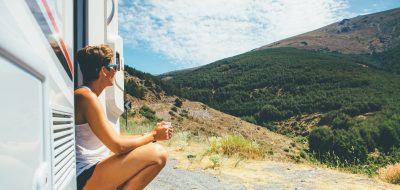RVers love national parks.

Visitors can explore Congaree National Park by canoe, kayak, or on foot by using the over 25 miles of hiking trails and 2.4 miles of the Boardwalk Loop Trail. © Rex Vogel, all rights reserved
From snow-capped glacial peaks to meandering coastal shorelines and from white sand deserts to steep gorges and canyons, some of America’s most awe-inspiring natural attractions are found within its extensive national park system.
Most people know about the popular and most-visited parks including Grand Canyon, Yosemite, Yellowstone, Great Smoky Mountains, and Zion.
Coping with crowds at national parks can get tiresome, especially during peak travel seasons. America is jam packed with national parks but the problem is that the most popular are just that—popular. They’re often crowded with loud tourists, littered with garbage people simply can’t seem to take home with them, or slowed down by traffic jams as tourists stop to take pictures of wildlife or search for a parking spot.
If you want to escape from the herd, or just take a breather from the hustle and bustle of the big name attractions, the US has numerous other, lesser-known parks each with their own unique attractions. And as an added bonus they’re usually much less crowded in the peak travel seasons making the visit more relaxing and enjoyable.
Add an extra element of exploration to your summer travel plans by including a more remote or lesser known national park in your RV travel plans.
Following are two parks that fall into that category.
Congaree National Park, South Carolina
Preserving the largest tract of old-growth bottomland hardwood forest remaining in the US, Congaree National Park is a designated wilderness area, an International Biosphere Reserve, and a Globally Important Bird Area.

Astonishing biodiversity exists in Congaree National Park, the largest intact expanse of old growth bottomland hardwood forest remaining in the southeastern United States. © Rex Vogel, all rights reserved
This 24,000-acre park is located in central South Carolina about 20 miles southeast of Columbia along the north side of the Congaree River.
Visitors can explore the natural wonderland by canoe, kayak, or on foot by using the over 25 miles of hiking trails and 2.4 miles of the Boardwalk Loop Trail. This park is a great place for animal watching, as it provides an ample habitat for mammals (bobcats, deer, river otters, and coyotes) and amphibians (turtles, snakes, and alligators).
Tent camping is allowed in the park with a free camping permit required; overnight vehicle camping with the use of a trailer, camper, or RV is not permitted.
Did You Know?
Many trees in the park have Spanish moss growing on them. Spanish moss absorbs water and food from the air and is in the same family as the pineapple.
Directions: From I-77, take Exit 5 southeast on SR 48 (Bluff Road) toward Gadsden for approximately 12 miles, following the brown and white Congaree National Park directional signs
Address: 100 National Park Road, Hopkins, SC 29061-9118
Phone: (803) 776-4396
Website: nps.gov/cong
For information about RV parks and campgrounds, check out Good Sam RV Travel Guide and Campground Directory.
Appomattox Court House National Historic Park, Virginia

The surrender site, the McLean House, a three-story structure is furnished with mid-nineteenth century furnishings. © Rex Vogel, all rights reserved
Walk the old country lanes where Robert E. Lee, Commanding General of the Army of Northern Virginia, surrendered his men to Ulysses Grant, General-in-Chief of all United States forces, on April 9, 1865.
Imagine the events that signaled the end of the Southern States’ attempt to create a separate nation. You cannot stand there and not be moved.
The National Park encompasses approximately 1,700 acres of rolling hills in rural central Virginia. The site includes the McLean home (surrender site) and the village of Appomattox Court House, the former county seat for Appomattox County. The site also has the home and burial place of Joel Sweeney—the popularizer of the modern five string banjo. There are twenty seven original 19th century structures on the site.
Location: 2 miles northeast of the town of Appomattox on SR 24
Address: Hwy. 24, P.O. Box 218, Appomattox, VA 24522
Phone: (434) 352-8987
Website: nps.gov/apco
For information about RV parks and campgrounds, check out Good Sam RV Travel Guide and Campground Directory.
Please Note: This is Part 1 of a 3-Part series on lesser known National Parks
Part 2: Lesser Known National Park Gems
Part 3: National Parks Nobody Knows
Worth Pondering…
The nation behaves well when it treats the natural resources as assets, which it must turn over to the next generation increased and not impaired in value.
—Franklin Delano Roosevelt
You May Also Like
- Are You Ready for Another Snowbird Tax?
- Keystone Sprinter Increases Market Share
- Vote for Your Favorite Park 2013
- Garmin Introduces First Navigation Device for RVers
- Winnebago Introduces 2014 Forza Diesel Pusher
If you enjoy these articles and want to read more on RV travels and lifestyle, visit my website: Vogel Talks RVing.






